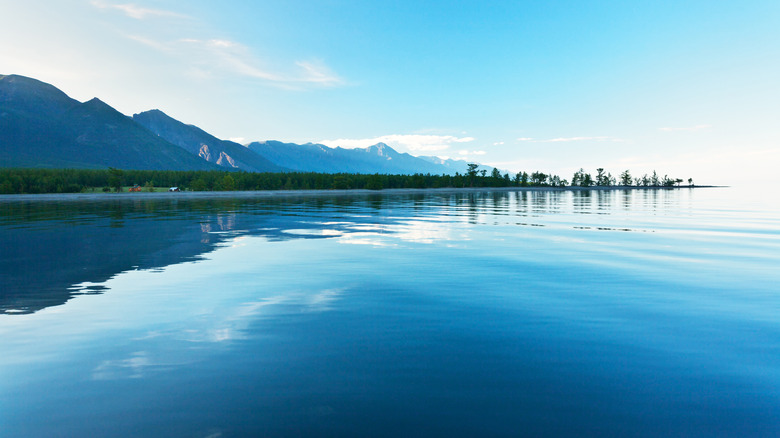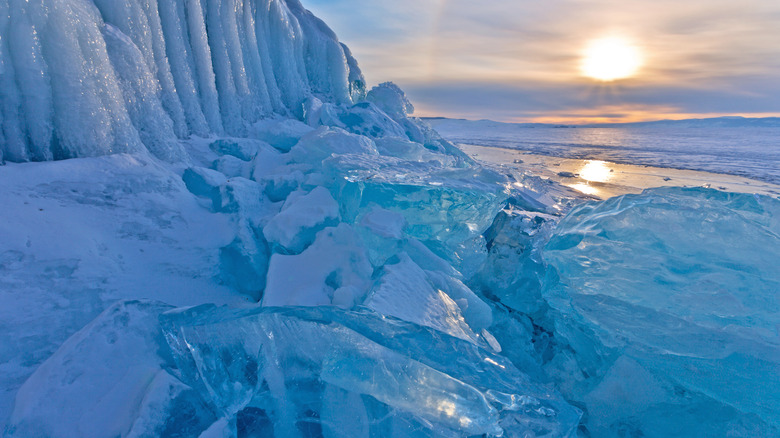The Truth About Russia's Turquoise Ice Crystals
Lake Baikal, located in Siberia, Russia, is one of the most beautiful natural wonders of the world and is part of the UNESCO World Heritage list. The body of water is the largest freshwater lake in the world, and it consists of one-fifth of the Earth's freshwater. Not only that, but Lake Baikal is the oldest lake in the world. As a reference, most lakes are approximately 18,000 years old and were formed when the last ice age ended. Lake Baikal, however, is estimated to be between 25 to 30 million years old, as reported by Forbes.
Lake Baikal is considered a rift valley — a region that is formed when two tectonic plates move away from each other. In this case, the Amurian plate and Siberian platform move away from each other, which in turn shifts the lake's structure and increases its width. Per ATI, these shifts add an additional half-inch to Lake Baikal's width every year. The information, thus far, is impressive, but there is another phenomenon that makes Lake Baikal even more special — turquoise ice crystals.
Lake Baikal is a winter paradise
Most of the year, Lake Baikal looks just like any ordinary lake. However, during the winter months of January to May, the lake transforms into a magical scene complete with turquoise-colored ice crystals that jut out of the frozen surface. Lake Baikal is 5,300 feet deep at its deepest point, which is located more than 4,000 feet under sea level (via Smithsonian Magazine). The lake's water is so clear, in fact, that visitors can see up to 130 feet below the water's surface.
In winter, Lake Baikal's temperature reaches up to -36 degrees Fahrenheit, and that's when the turquoise ice crystals form. Because of the water's clarity, the ice blocks give off a turquoise hue when the sunlight hits them. With the frigid temperatures in winter, the lake forms an ice surface that can reach up to two meters thick. The turquoise gem-like ice blocks form when the lake's surface does not freeze evenly, per Peta Pixel. Every year, many professional photographers around the world make their way to Lake Baikal to capture the magnificent natural phenomenon.

